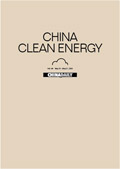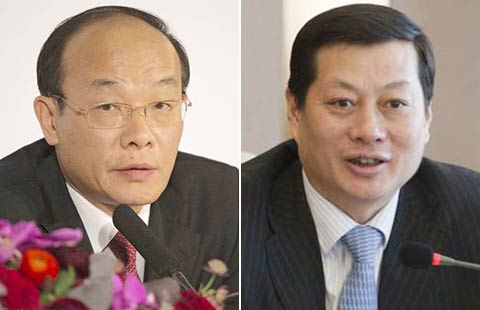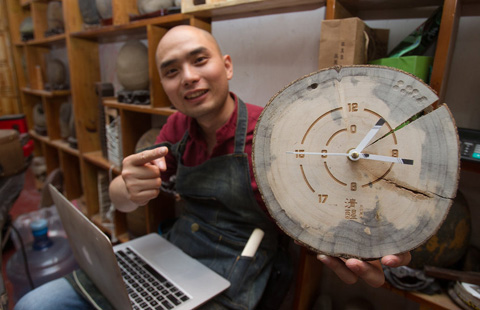Solar power faces eclipse from US tariffs
By Xie Yu (China Daily) Updated: 2012-05-28 11:05It's hard not to notice the huge tilting solar walls at the headquarters of Suntech Power Holdings, the world's largest producer of silicon solar modules, located in Wuxi city, East China's Jiangsu province. Through the use of solar power, the walls provide 80 percent of the electricity required by the building, with zero emissions of air pollutants.
|
|||
"The production line is operating normally. And we are well prepared with our internationalized production," said Zhang Jianmin, senior manager of the CEO's office. Suntech exported 460 megawatt modules to the US last year, accounting for 23 percent of the company's total global shipments.
Since the beginning of the year, all the modules Suntech has exported to the US have been fitted with solar cells made outside the Chinese mainland, mainly in Taiwan which will not be subject to the proposed tariffs.
Smaller producers are suffering the most. "We have lost all overseas orders and are relying simply on domestic orders now. So, we have stopped half of the production lines and lost almost 20 million yuan ($3.2 million)," said a man called Sun from Taizhou city, Zhejiang province, who was reluctant to reveal the name of his solar-module company for fear of alerting rivals to his problems.
Sun said he and some friends invested 200 million yuan in the company, which began production in 2009, but they now may have cause to regret their decision because of the current industry malaise.
Avoiding the tariff
On May 17, the Obama administration proposed the imposition of stiff new tariffs on Chinese-made solar panels, claiming that Chinese companies are improperly flooding the US market with government-subsidized products. While 61 specific Chinese companies, including Suntech, will be subject to the duty of about 31 percent, others will be subject to a rate of 250 percent. "It is impossible to remain price-competitive with a tariff of 31 percent," said Zhang. However, the duties only apply to solar cells, not to the modules in which they are assembled, which means manufacturers on the Chinese mainland can serve the US market with cells from alternative sources. And that is exactly what they are doing.
Zhang admitted that the use of solar cells manufactured in Taiwan will push the price of his company's modules higher, and while he declined to provide figures, he insisted that the company's products will remain competitive in the US market.
At present, Taiwan has the capacity to manufacture solar cells capable of generating 7,300 mW, more than double the expected size of the US market, which is on course to be about 3,000 mW this year. The price of the cells is about 10 percent higher than those made on the mainland, according to PVMate, a photovoltaic industry magazine.
CEOs from other big solar players, including Changzhou-based Trina Solar and Suzhou-based Canadian Solar, also confirmed that they are using cells made outside the Chinese mainland to avoid the prospective tariff.
"The cost will be higher with the US duties on Chinese solar products. However, the increased cost will be transferred to the downstream US distributors, installers, and consumers," said Gao Jifan, CEO of Trina Solar, noting that several downstream US companies have been forced to delay their own projects because of uncertainties over policy and prices.
No one wins
In October, the US manufacturer SolarWorld, along with six other companies, complained that their Chinese counterparts were dumping panels at below cost, thus driving US manufacturers out of business. The alleged dumping has been cited as one of the reasons that the Silicon Valley-based manufacturer Solyndra closed its doors and filed for bankruptcy in 2011.
The Associated Press reported that the collapse of Solyndra embarrassed Obama and prompted sharp criticism from presidential hopeful Mitt Romney and other Republicans critical of Obama's green-energy policies. Those factors prompted the USDC investigation and the proposed new tariffs.
Industry insiders in China said the use of solar cells made in Taiwan would alleviate the problem, but would also narrow their profit margins. Furthermore, the new tariff will form a trade barrier and make the US market less accessible.
However, those affected by the fallout from the spat could also include downstream US industry insiders and consumers. AP reported that the new tariff could result in job losses, because US companies are both buyers of Chinese products and suppliers of materials.
The majority of US solar-panel installers oppose the tariffs, arguing that less-expensive imports have helped make the panels more affordable to US customers, in line with efforts by Obama and others to promote renewable energy, according to reports from AP.
Cheap Chinese-made solar panels helped to double the scale of installation in the US last year. Meanwhile, US solar companies are also concerned that China will retaliate.
According to statistics from the China Chamber of Commerce for Import and Export of Machinery and Electronic Products, the country imports more than $2 billion worth of polysilicons, ethylene vinyl acetate, sizing agents and other raw materials from the US every year.
If China were to impose duties on these products, US producers would be left shouldering the burden, and China's Ministry of Commerce announced on Thursday that it has uncovered six US policies that support or subsidize the country's renewable-energy industry, in contravention of World Trade Organization rules.
Ren Yifeng, executive secretary-general of the China Society for WTO Studies, said that China's move in uncovering the alleged US subsidies is aimed at hitting back at the anti-dumping duties imposed on Chinese solar products.
"I hope all industry insiders take action to avoid a 'world war' in the solar industry, because fighting each other will not help to promote new energy. What we should do is play according to the market rules, and make solar cheaper and cheaper," said Shawn Qu, the CEO of Canadian Solar.
Challenges for players
Although Chinese companies have only been manufacturing PV products for about 10 years, they now make 60 percent of the products used globally. Technically speaking, China's PV makers are highly experienced and say they are close to achieving a photoelectric conversion rate of 21 percent for each crystal battery, which would be the highest efficiency level to date and would reduce the cost to 1 yuan per kilowatt-hour.
But the sluggish market is exerting pressure on nearly all solar companies. The demand for solar products is falling with European countries, most notably Germany, slashing subsidies for the industry. The US government is imposing new tariffs as it looks to develop its domestic PV industry, while Japan and India are emerging markets with strong demand, but offer limited access to Chinese companies because their governments are highly protective of their own brands.
Meanwhile, a supply glut and falling prices are cutting profits. Experts estimate that for most companies the profit margin has narrowed to just 20 percent from 139 percent previously.
"A lot of small and medium-sized PV enterprises in China have gone bankrupt or suspended production. Of the remainder, around 20 percent are not even operating at half capacity," said Sun Guangbin, secretary general of the solar PV products branch of the CCCME.
As a result, the nation's leading solar companies are trying hard to lower costs, improve conversion-efficiency rates and explore new markets.
Suntech's Zhang said new markets, including China, Africa, India, and the Middle East accounted for almost 30 percent of the company's total shipments last year. Qu from Canadian Solar said he is committed to strengthening the company's total-solution business, which provides a whole range of services to clients across the entire production process.
Although China is the world's largest producer of solar products, the application of the power generated is not wide enough. Industry players are calling on the government to integrate more solar-generated energy into the country's electricity network. State Grid Corp of China, the country's largest power distributor, has declared its intention of installing 90 gW of wind capacity and 8,000 mW of solar capacity by the end of 2015.
Meanwhile, a recent executive meeting of China's State Council, also stressed the use of off-network solar energy, which could also provide a boost for solar panel installation in factories and homes, according to a report in the Shanghai-based China Business News on Thursday.
"It is true that we are experiencing a difficult time, but I am optimistic about the future, and I believe China will become the largest market for solar in a few years," said Suntech's CEO Shi Zhengrong.
For more subscription details of China Clean Energy, please visit ourE-Shop.
- Chinese old brands spring to life with e-commerce
- China to deepen health system reform
- A college student's entrepreneurial dream
- China's top economic planner lays out 2015 priorities
- Vice head of giant iron, steel corporation under probe
- China eyes reduced energy intensity in traditional sectors
- China not joining 'QE club'
- Customs slashes red tape along the Silk Road


















